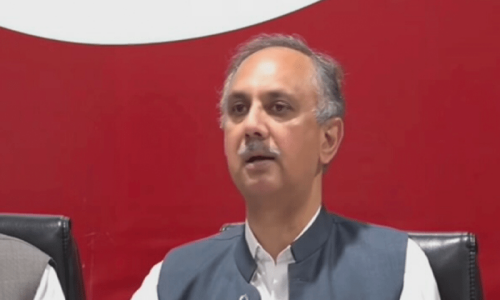ISLAMABAD, July 16: The country’s dams and water reservoirs have lost 27 per cent of live water storage capacity and there is an urgent need for developing new water reservoirs but lack of political consensus is the main hindrance to construction of mega dams.
A report submitted by Water and Power Development Authority to the ministry of water and power says the live water storage capacity of Tarbela, Mangla and Chashma dams has declined by 4.37 million acres feet (MAF) over the years.
The original live storage capacity of these reservoirs was 16.28 MAF but because of sedimentation and silting it has gone down to 11.91 MAF.
Wapda has also warned that the live storage capacity will further drop considerably by the end of 2025.
The situation is becoming serious and will lead to severe water shortage for the people of the country.
Wapda report further says that per capita water availability will drop to 877 cubic metres by 2020 when the population of country will be around 204 million, and country might be facing an acute water shortage if the situation is not reversed.
According to details, the Tarbela dam’s original live water storage capacity was recorded at 9.69 MAF, but sedimentation has brought it down to 6.67 MAF. Wapda estimates suggest that by 2025 water storage capacity of the Tarbela dam will further reduce and will come down from original 9.969 MAF and existing 6.69MAF to 4.18 MAF with a loss in the storage capacity of about 43 per cent.
The Mangla dam’s original live storage capacity was recorded at 5.87 MAF but sedimentation has brought it down to 4.99 MAF or 85 per cent of the original live water storage capacity. Wapda estimates suggest that the Mangla dam’s live storage capacity loss to go up from 0.85 MAF to 1.16 MAF or 20 per cent of the original capacity by 2025.
The Chashma dam, the third large reservoir, had the original water storage capacity of about 0.72 MAF but because of sedimentation it came down to 0.25 MAF or 35 per cent loss in the live storage capacity at the end of last year.
The Wapda report notes that the average annual water inflows in the country are good enough to develop adequate storages.
The country has water storage potential of up to 17.8 MAF in future, and as soon as consensus to build mega dams is reached the situation can be harnessed as enough water is available in country to build three more dams similar to the Diamer-Bhasha dam.
The report further says that although there were cycles of dry spell, the average annual water flow downstream Kotri has remained 31.3 MAF from 1976 to 2010, while in 2011 alone 54.5 MAF of water went downstream Kotri because of successive floods and that water could have been stored for a longer period of time.














































Dear visitor, the comments section is undergoing an overhaul and will return soon.